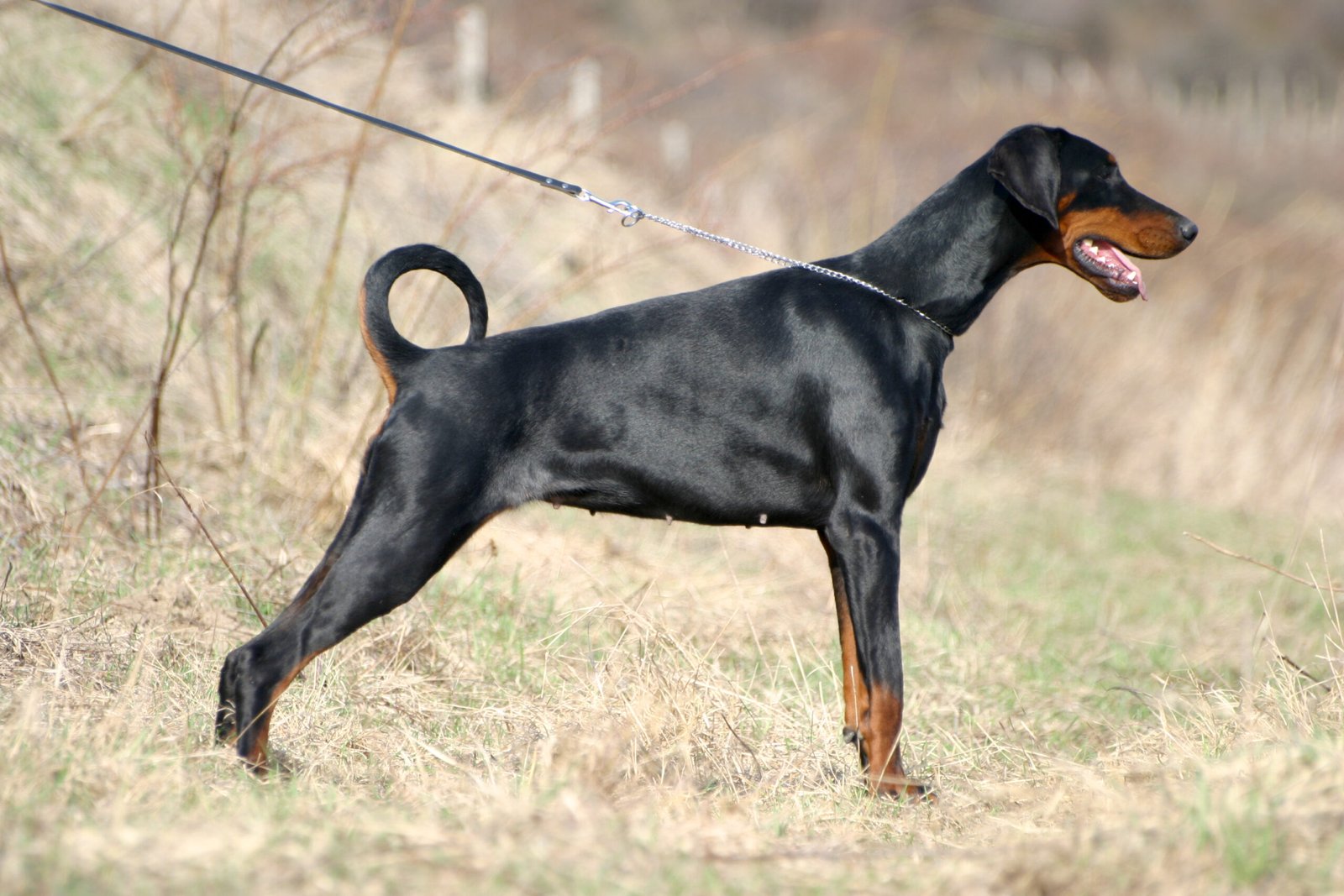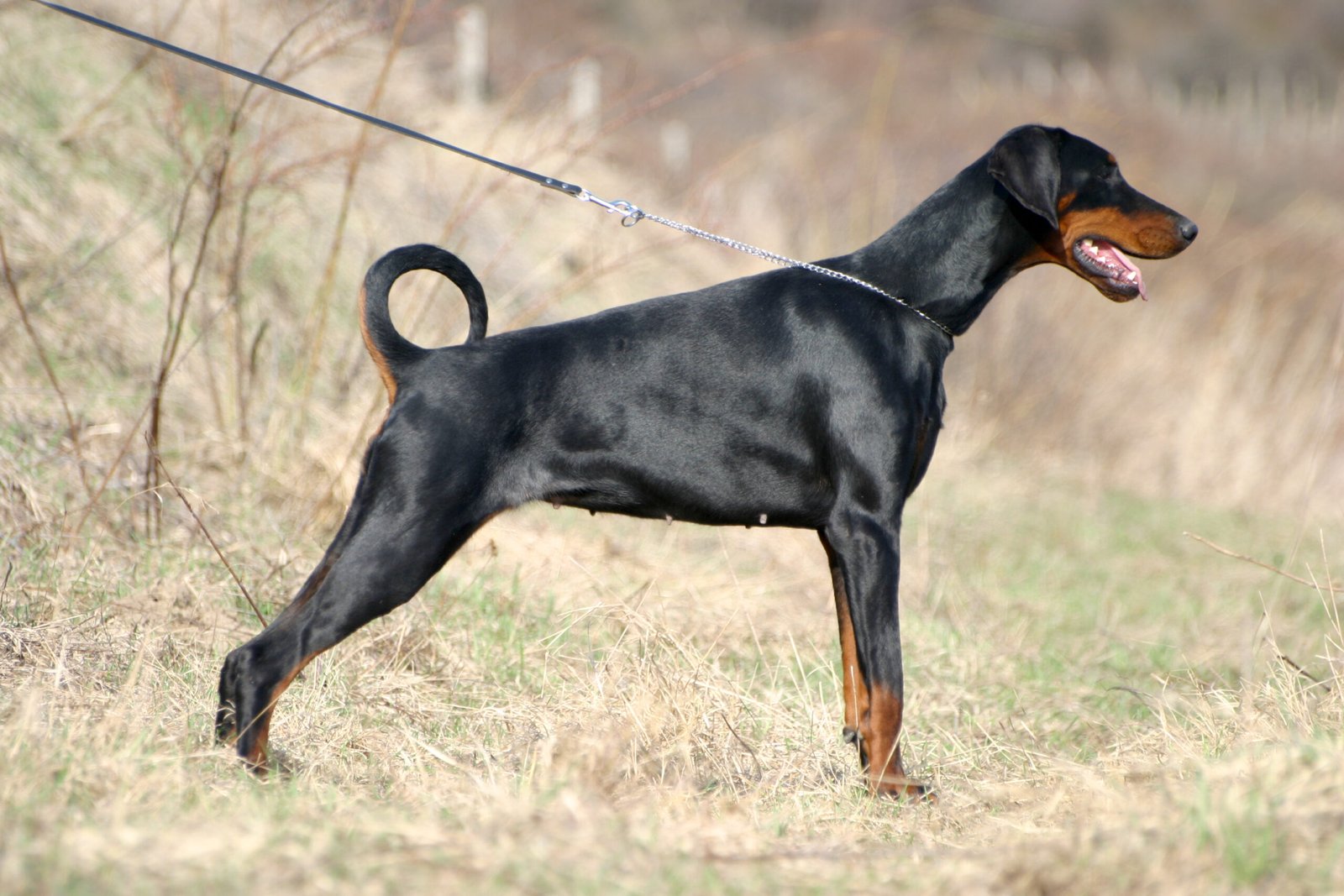Dobermans and Rottweilers are two of the most popular breeds when it comes to guard dogs. Known for their loyalty and protective nature, these breeds have been chosen by many families and security professionals to keep homes and properties safe. However, despite their shared reputation, Dobermans and Rottweilers have distinct characteristics and abilities that set them apart. This article explores the various ways in which these two breeds differ as guard dogs, providing insights into their unique traits and helping prospective dog owners make informed decisions.
Physical Appearance and Size
One of the most noticeable differences between Dobermans and Rottweilers is their physical appearance. Dobermans are sleek and athletic, with a lean build that makes them appear elegant and agile. They typically weigh between 60 to 100 pounds and stand about 24 to 28 inches tall. Their coat is short and shiny, often black with rust markings, giving them a regal look.
Rottweilers, on the other hand, are more robust and muscular. They have a stockier build, weighing between 80 to 135 pounds and standing 22 to 27 inches tall. Their coat is also short but denser, often black with tan markings. This powerful stature makes them appear more intimidating, which can be an advantage in deterring potential threats.
These differences in size and appearance can influence how each breed performs as a guard dog. While Dobermans may rely on speed and agility, Rottweilers may use their strength and presence to ward off intruders.
Temperament and Personality
The temperament of a guard dog is crucial in determining its effectiveness. Dobermans are known for their intelligence and alertness. They are quick learners and highly trainable, making them excellent guard dogs. Their keen sense of awareness means they are always on the lookout for unfamiliar sounds or movements, ready to alert their owners at a moment’s notice.
Rottweilers, while also intelligent, are more laid-back in their approach. They are known for their calm and confident demeanor, which can be reassuring in high-pressure situations. This breed tends to be more reserved with strangers, often assessing the situation before taking action. Their loyalty to their family is unmatched, and they will not hesitate to protect their loved ones if they sense danger.
Both breeds have their unique strengths when it comes to temperament, and the choice may depend on the specific needs and preferences of the owner.
Training and Obedience
Training is a vital aspect of raising a guard dog, and both Dobermans and Rottweilers excel in this area, albeit in different ways. Dobermans are known for their eagerness to please and their ability to pick up commands quickly. They thrive in structured training environments and respond well to positive reinforcement techniques.
Rottweilers, while also responsive to training, may require a more patient approach. They can be a bit stubborn at times, necessitating consistent and assertive training methods. However, once trained, they are incredibly obedient and reliable.
The key to successful training with either breed is to start early and be consistent. Both Dobermans and Rottweilers are intelligent and capable of learning complex tasks, making them exceptional guard dogs when properly trained.
Protective Instincts

A guard dog’s primary role is to protect, and both Dobermans and Rottweilers have strong protective instincts. Dobermans are naturally vigilant and will often act as a first line of defense. Their agility and speed allow them to quickly respond to any perceived threat, making them excellent at patrolling and monitoring large areas.
Rottweilers, on the other hand, have a more pronounced guarding instinct. They are known for their fearless nature and unwavering loyalty. This breed will not back down in the face of danger, often placing themselves between their family and any potential threat.
While both breeds are protective, their methods differ, with Dobermans often taking a more proactive approach and Rottweilers relying on their physical presence and bravery.
Energy Levels and Exercise Needs
Dobermans are high-energy dogs that require regular exercise to keep them happy and healthy. They enjoy activities like running, agility training, and playing fetch. This high energy level is beneficial for a guard dog, as it ensures they are always alert and ready to respond to any situation.
Rottweilers, while also active, have a more moderate energy level. They enjoy daily walks and playtime but do not require as much intensive exercise as Dobermans. Their energy is more focused, allowing them to remain calm and composed even in stressful situations.
Understanding the energy levels and exercise needs of each breed is essential for owners to provide the appropriate environment and activities for their guard dogs.
Socialization and Family Interaction
Socialization is crucial for any guard dog to ensure they can distinguish between friend and foe. Dobermans are naturally sociable and enjoy interacting with family members and other pets. They thrive in environments where they receive plenty of attention and affection.
Rottweilers, while also family-oriented, may be more reserved with strangers and new situations. They tend to form strong bonds with their family and can be incredibly affectionate once they trust someone. Proper socialization from a young age is essential to ensure they remain well-behaved and non-aggressive.
Both breeds can make wonderful family pets when properly socialized, each offering a unique blend of protection and companionship.
Health and Lifespan
When considering a guard dog, it’s important to take into account the health and lifespan of the breed. Dobermans typically have a lifespan of 10 to 13 years, with common health issues including heart problems and hip dysplasia. Regular vet check-ups and a healthy diet can help mitigate these concerns.
Rottweilers have a similar lifespan, usually living between 8 to 10 years. They are prone to health issues such as joint problems and certain cancers. As with Dobermans, regular veterinary care and a balanced diet are essential to ensure a long and healthy life.
Understanding the health needs of each breed can help owners provide the best care for their guard dogs, ensuring they remain fit and capable of performing their protective duties.
Conclusion
Dobermans and Rottweilers are both exceptional guard dogs, each offering unique qualities and strengths. While Dobermans excel in agility and alertness, Rottweilers bring strength and confidence to the table. Choosing between these two breeds depends on the specific needs and preferences of the owner, as well as the environment in which the dog will be living. By understanding the differences in appearance, temperament, training, and other factors, prospective dog owners can make an informed decision that best suits their lifestyle and security needs.

Andrew Alpin from India is the Brand Manager of Doggo digest. Andrew is an experienced content specialist and social media manager with a passion for writing. His forte includes health and wellness, Travel, Animals, and Nature. A nature nomad, Andrew is obsessed with mountains and loves high-altitude trekking. He has been on several Himalayan treks in India including the Everest Base Camp in Nepal.






